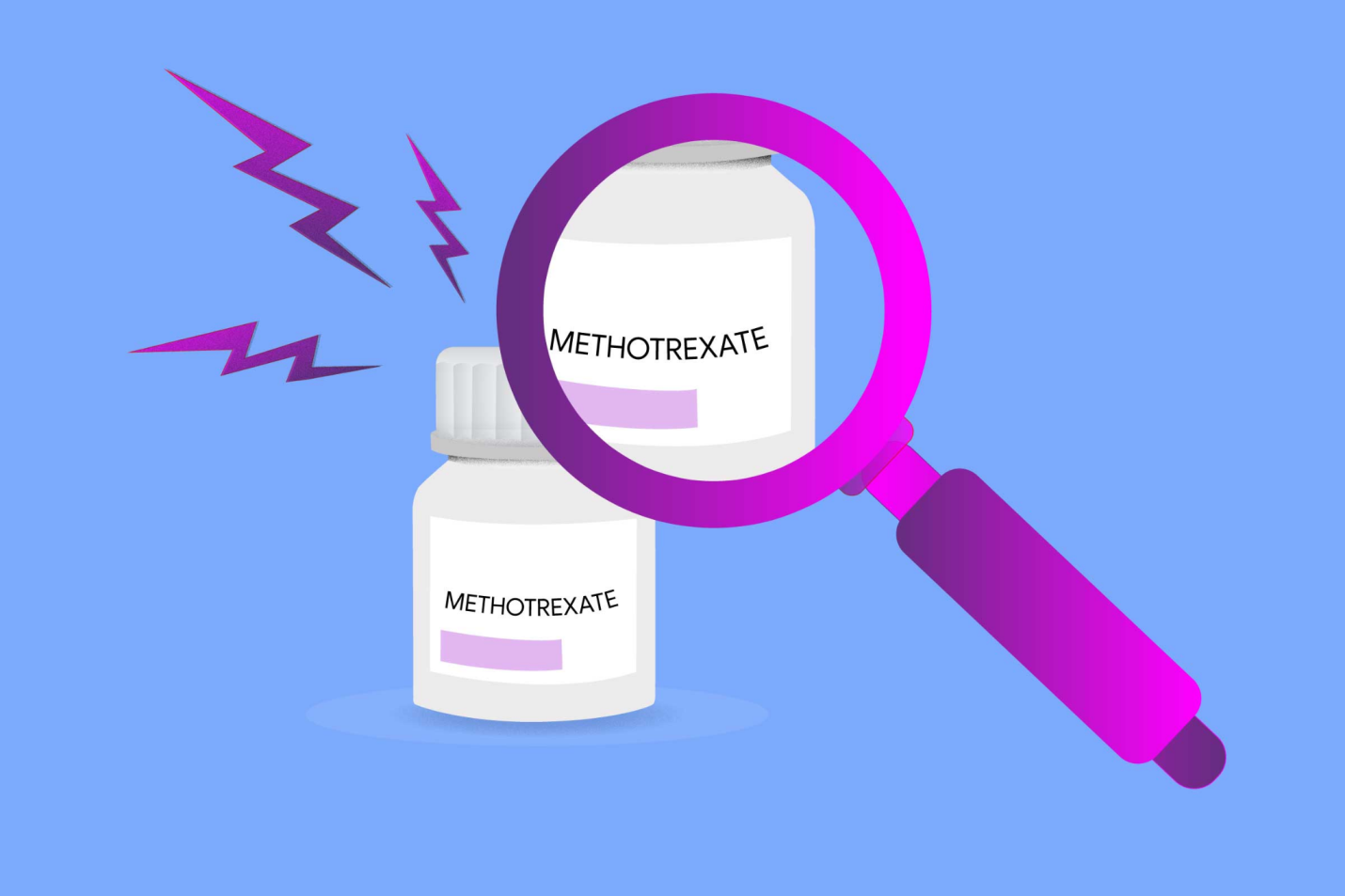Description

Copyright infringement not intended
Picture Courtesy: creakyjoints.org
Context: The development of a highly fluorescent material providing a non-enzymatic method for Methotrexate detection represents a pivotal advance in addressing the toxicity linked to high doses of this anti-cancer medication.
Details
- Researchers have developed a new material that can detect the presence of methotrexate, a drug used to treat various types of cancer, in biological fluids.
- Methotrexate is effective at killing cancer cells, but it can also cause serious side effects if the dosage is too high. Therefore, it is important to monitor the levels of methotrexate in patients undergoing chemotherapy.
|
Methotrexate
●It is a type of disease-modifying anti-rheumatic drug (DMARD) that is used to reduce inflammation and slow the progression of autoimmune diseases. Autoimmune diseases are caused when the immune system mistakenly attacks healthy tissues in the body.
●It is commonly used to treat rheumatoid arthritis, psoriasis, psoriatic arthritis, juvenile idiopathic arthritis, and Crohn's disease. It is also used to treat certain types of cancer, such as leukaemia and lymphoma.
●It works by blocking the production of folic acid, which is a vitamin that is necessary for cell growth. By blocking folic acid production, methotrexate can slow the growth of abnormal cells, such as those found in autoimmune diseases and cancer.
●It can have side effects, including mouth sores, nausea, vomiting, hair loss, and fatigue. It can also cause more serious side effects, such as liver damage and lung damage. Therefore, it is important to talk to a doctor about the risks and benefits of methotrexate before taking it.
|

Metal-organic Framework (MOF)
- The new material is a metal-organic framework (MOF) that contains zinc and organic ligands. MOFs are porous materials that can trap molecules inside their structures.
- The researchers found that their MOF can selectively capture methotrexate and emit a strong fluorescence signal. This signal can be measured by a simple device, such as a smartphone camera, to determine the concentration of methotrexate in a sample.
- The advantage of this method is that it does not require any enzymes or other biological components, which are often expensive, unstable, and sensitive to environmental conditions.
- The MOF-based sensor is stable, cheap, and easy to use. It can also detect methotrexate in complex mixtures, such as blood serum and urine, without any interference from other substances.
- The researchers hope that their MOF-based sensor can be used for rapid and accurate diagnosis of methotrexate levels in patients, and help optimize the dosage and efficacy of chemotherapy. They also plan to explore other applications of their MOF, such as drug delivery and imaging.
Components of the Material
- Phosphorene: It's a two-dimensional material composed of phosphorus atoms arranged in a single layer. Its unique electronic and optical properties make it suitable for various applications, especially in optoelectronics and sensing.
- Cystine: This is an amino acid formed from the oxidation of two cysteine molecules, crucial for protein structure and function. Incorporating cystine into the material likely contributes to its biocompatibility.
- Gold (Au): Gold nanoparticles or gold-based nanomaterials are often used in sensor development due to their excellent biocompatibility, stability, and tunable optical properties.
Optical Properties and Sensing Mechanism
- The combination of ‘Phosphorene-Cystine-Gold (Ph-Cys-Au)’ components, creates a material with exceptional fluorescent properties. The material's fluorescence likely changes in the presence of Methotrexate. This change in fluorescence is then used as a basis for detecting the presence and quantity of MTX in a sample.
Advantages and Application
- Fast Detection: The material offers a non-enzymatic and rapid method for detecting Methotrexate, crucial for timely intervention in cases of overdose.
- Sensitivity: It exhibits an impressive detection limit, able to identify MTX even at very low concentrations. The specified linear range showcases its sensitivity in measuring different concentrations of the drug.
- Biocompatibility: The material's biocompatibility is crucial for its use in biological systems, ensuring minimal or no adverse effects when employed for medical purposes.
Biocompatibility and Cytotoxicity
- The material demonstrated selective cytotoxicity towards cancerous cells while remaining non-cytotoxic for non-cancerous cells. This indicates its potential as a targeted therapy or detection method, specifically affecting cancer cells without harming healthy tissues.
Overall Significance
- The development of Ph-Cys-Au as a fluorescent material and its application as a sensing platform for MTX overdose detection represents a significant breakthrough in medical diagnostics.
- It addresses the critical need for a fast, sensitive, and biocompatible method to detect and monitor anti-cancer drug toxicity, potentially aiding in timely interventions and reducing adverse effects on patients undergoing MTX treatment.
.jpg)
Conclusion
- The scientists at IASST have developed a fluorescent material with exceptional optical properties that serves as a sensitive and biocompatible visual sensing platform for detecting MTX overdosage, providing a promising solution for fast and efficient detection of anti-cancer drug toxicity.
|
PRACTICE QUESTION
Q. . What is Methotrexate, recently highlighted in the news?
A) A new type of fluorescent material for medical imaging.
B) An anti-cancer drug used to treat various cancers.
C) A synthetic polymer for tissue engineering.
D) A novel enzyme for drug metabolism.
Answer: B
Explanation: Methotrexate is a chemotherapy drug widely used to treat different types of cancers, including leukaemia, lymphoma, and solid tumours.
|















